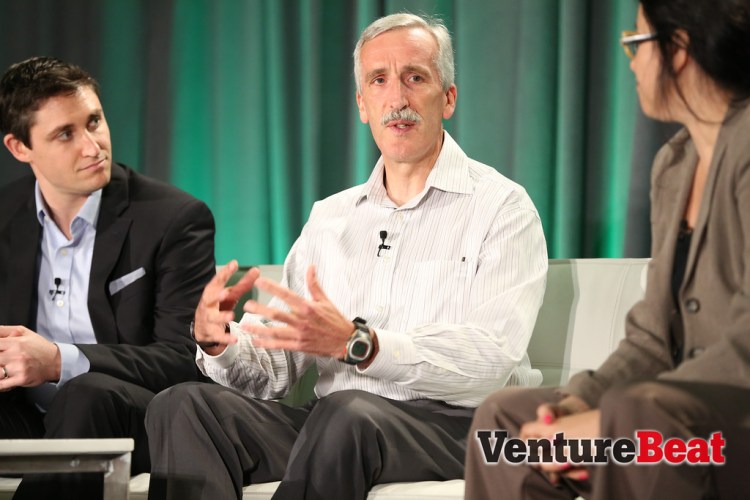SAN FRANCISCO — How does Sutter Health get wearables data into the patient record so that doctors and other caregivers can use it? Very carefully, as it turns out.
So said Martin Entwistle, the director of Sutter Health’s Innovation Center at the Palo Alto Medical Foundation, at VentureBeat’s HealthBeat conference. Entwistle is charged with developing an integration platform that will allow Sutter doctors access to the steps and heartbeats counted on wearables worn by Sutter members.
When you get down to the nitty-gritty of actually bringing these metrics into the electronic health record at the health provider, lots of things can go wrong. For instance, if an erroneous data point goes from the integration platform into the electronic health record (EHR) system, Entwistle said, it can’t be removed. (For various legal reasons that’s true of all EHR data.)
Or consider one of the first problems that occurred when Sutter tried to move consumer data into its Epic EHR.
“The first data point it sent was time stamped for a different time zone,” Entwistle said, “in this case, in China.”
Entwistle and company began building their own platform, which integrated with Fitbit and Jawbone wearable devices, as well as with Microsoft’s HealthVault personal health data repository. But integrating devices (there are thousands of them) and other platforms is very taxing and expensive work. So Entwistle brought in Validic, which is in the business of providing an integration platform for health providers like Sutter. Validic has created a standard for the data that flows into its platform from both consumer wearable devices to clinical devices like blood pressure monitors.
Not that it’s easy for Validic either. Most providers and insurers are just warming up to the idea of receiving data from connected clinical devices and consumer health wearables.
“Sometimes I go to work feeling like I’m dragging [them] kicking and screaming into the world of 2014,” said Validic CTO Drew Schiller.
The biggest problems health providers encounter moving connected device data into the EHR are operability, privacy, and liability. For instance, a medical group might want to receive wearables data, but they may not have the fields in their EHR to input the data.
There’s also anxiety around the health provider’s obligation to protect the privacy of the consumer data. Once the data moves from the consumer realm, past the firewall, and into the provider’s systems, many believe it’s subject to HIPAA privacy laws. Also, if a piece of diagnostic information comes in from a connected device and the doctor misses it, he could be legally responsible for the adverse health event it predicted.
Entwistle, however, believes it’s all worth the trouble.
“We have a whole new class of devices that are contributing valuable data,” he said.
HealthBeat is VentureBeat’s two-day conference about how new ways of tracking our personal data can improve our health and health care system. It concludes tomorrow.


